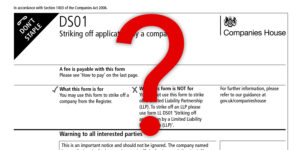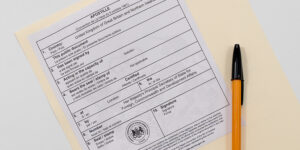A limited company SIC code, or Standard Industrial Classification code, is a unique sequence of five numbers that represents a specific economic activity. When a new UK company is incorporated at Companies House, at least one SIC code must be used to describe the type of trade carried out by the business.
- Our Privacy Package - a small price to pay for peace of mind
- A guide to the company registration number
- What is a company’s Unique Taxpayer Reference (UTR)?
Introduced by the Office for National Statistics (ONS) in 1948, the use of SIC codes in the UK “provides a framework for the collection, tabulation, presentation and analysis of data”. This uniformity of economic activities enables government agencies and non-government bodies to gain a better understanding of the types of businesses and other statistical units operating within the UK.
Companies House, in particular, uses limited company SIC codes to track the number of UK-registered companies operating in different industries. This helps Companies House to identify emerging trends, monitor the health of individual industry sectors, and understand the changing economic landscape across the UK.
Where to find your limited company SIC code
You will find your limited company SIC code on the condensed list of SIC codes, which is available online from Companies House. This is a compact version of the full list of UK Standard Industrial Classification of Economic Activities 2007 available from the Office for National Statistics.
You must only use SIC codes from the condensed list when making any filings at Companies House, including your company formation application and annual confirmation statements. Failure to do so may result in your filings being rejected.
If your company is using an old SIC code from the previous 2003 version of codes, you must search the SIC Conversion Table to find the 2007 equivalent. You should then provide the new code(s) on your next confirmation statement and any other future filings.
The condensed list of SIC codes categorises over 700 economic activities within the following 21 broad industry groups:
- Section A – Agriculture, Forestry, and Fishing
- Section B – Mining and Quarrying
- Section C – Manufacturing
- Section D – Electricity, gas, steam, and air conditioning supply
- Section E – Water supply, sewerage, waste management, and remediation activities
- Section F – Construction
- Section G – Wholesale and retail trade; repair of motor vehicles and motorcycles
- Section H – Transportation and storage
- Section I – Accommodation and food service
- Section J – Information and communication
- Section K – Financial and insurance activities
- Section L – Real estate and activities
- Section M – Professional, scientific and technical activities
- Section N – Administrative and support service activities
- Section O – Public administration and defence; compulsory social security
- Section P – Education
- Section Q – Human health and social work activities
- Section R – Arts, entertainment, and recreation
- Section S – Other service activities
- Section T – Activities of households as employers; undifferentiated goods- and services-producing activities of households for own use
- Section U – Activities of extraterritorial organisations and bodies
To find your limited company SIC code, you need to search the condensed list to find the most appropriate trade description and relevant SIC code for your company. Whilst the list is considerable, it is not exhaustive, so you may have to use more than one limited company SIC code to describe what your business does.
Some trade descriptions are very specific, such as ‘Growing of grapes’ and ‘Plastering’, whereas some descriptions are more general, such as ‘Other business support service activities n.e.c.’ or ‘Physical well-being activities’. The ease of finding the most appropriate SIC code really depends on what your company does, so you may need to spend some time looking through the list of codes.
How many SIC codes can I use?
You must provide at least one limited company SIC code during the incorporation process, even if your company is going to be dormant or non-trading. Most people find that one SIC code is sufficient for their business. However, you can use up to four SIC codes if your business activities are varied or complex and cannot be described by just one code.
For example, if you have a restaurant that also provides takeaway and off-licence services, you could use code 56101 (Licensed restaurants), code 56103 (take-away food shops and mobile food stands), and code 46342 (Wholesale of wine, beer, spirits, and other alcoholic beverages).
However, you should be wary of using multiple SIC codes for property activities. This can sometimes pose a challenge to HMRC, mortgage lenders, and other finance providers if all activities are carried out through one company. In such instances, we strongly recommend seeking professional advice and assistance from an accountant before making any applications to third parties.
Can I change my limited company SIC code?
You can change your SIC code(s) at any time if your principal business activities change or become more varied. Simply find the appropriate SIC code(s) on the condensed list (or Conversion Table, if applicable) on the Companies House website and report it on your next confirmation statement.
Alternatively, you can change it immediately by filing an early confirmation statement.
What happens if I provide the wrong SIC code for my limited company?
Providing the wrong SIC code is usually not a problem because it’s a quick and easy mistake to rectify. You can change your limited company SIC code when you deliver your next confirmation statement, or you can change it immediately by updating your most recently filed confirmation statement.
However, we do recommend that you correct any SIC code errors as soon as possible, otherwise you may face issues when dealing with lenders, insurers, and other third parties who scrutinise such details.
SIC codes are particularly important to lenders and insurance underwriters because the activities of a company play a crucial role in the decision-making process. Providing the wrong information could lead to rejected finance applications and invalid insurance policies.
What does a non-trading or dormant company SIC code look like?
Dormant companies and non-trading companies have specific codes. If your company is dormant (i.e. it is not trading and has no significant accounting transactions going through its books), you should use SIC code 99999. If your company is non-trading (i.e. it is not doing business but still has certain transactions going through its books), you should use SIC code 74990.
Please note that the information provided in this article is for general informational purposes only and does not constitute legal, tax, or professional advice. While our aim is that the content is accurate and up to date, it should not be relied upon as a substitute for tailored advice from qualified professionals. We strongly recommend that you seek independent legal and tax advice specific to your circumstances before acting on any information contained in this article. We accept no responsibility or liability for any loss or damage that may result from your reliance on the information provided in this article. Use of the information contained in this article is entirely at your own risk.











Join The Discussion